
Have you noticed that something interesting has been happening in the world of astronomical equipment? Driven, perhaps, by the practicalities of storage, or the convenience of travel-friendly compression for those escaping light pollution, the popularity of short refractors has been burgeoning. It was a slow start; short conventional achromats inherently possess optical challenges that counter their compact expediency. To their rescue came new types of glass that allowed these abbreviated telescopes not only to perform the required optical gymnastics that overcome these hurdles, but also to produce results that would have seemed miraculous only a few years ago.
These ‘scope in a box’ instruments solved a problem for many who needed high-performance telescopes that could be easily taken to distant dark sites or eclipse tracks. With their genesis over, these compact telescopes are now carving out a niche of their very own, equally at home in any environment, home or away, for critical use in both visual astronomy and imaging. I was therefore very keen to see how this new kid on the block, Rother Valley Optics’ (RVO) new Horizon 72mm ED would perform. For the purposes of this review, I was also provided with its matching stablemates of an RVO 1.0× field flattener and a 50mm Horizon guidescope.
Rather than beginning my review with ‘out of the box’, I would, for a change, like to start with the box itself. Frankly, it is one of the smartest, meanest-looking telescope boxes that I have seen in a while. With reinforcement on every edge and corner of its noire demeanour, this aluminium case comes across as fiercely protective of the instrument inside – and even the spring-loaded handle snaps back against the case with attitude. The RVO logo on the lid looks cool, too. How compact an instrument nestles within is already indicated by its container having a length of only 40cm.
What’s in the box is smart, too. The creamy matte white of the aluminium tube assembly is embellished with RVO’s own livery through orange tube rings and sky blue trims for the dew-shield tube and optical back – and in its fully collapsed storage form, it is barely 32cm long.
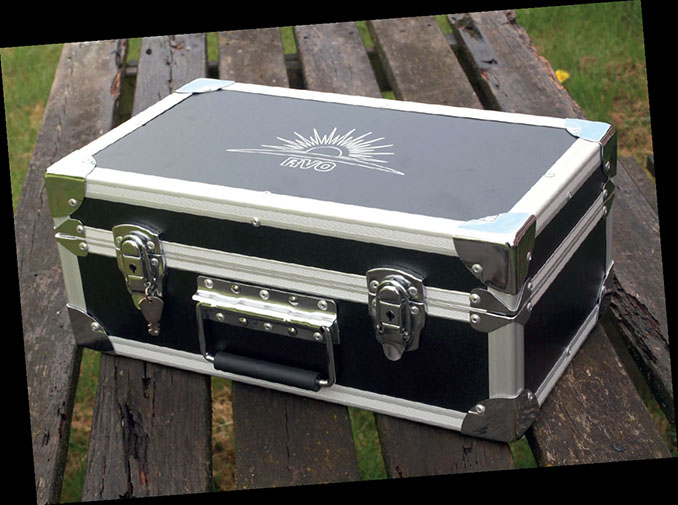
The 72mm, f/6 primary lens is an air-spaced ED doublet using FPL-53 optics. This is cocooned by an impressively long retractable dew tube that moves with silky smoothness. At the business end, the two-inch optical back consists of a millimetre-graduated lockable two-speed focuser and a 1.25-inch adaptor. The extension of the focuser is about 90mm. This is deliberately long in order to meet the potential back-focus needs of auxiliary equipment. I am happy to report that throughout its length, the rack and pinion of the focuser exhibited no slop and held targets steady throughout its range.

Horizon guidescope
The telescope comes with its own tube rings and (30mm) dovetail bar, so that with a little preparation, this eager ‘ED’ is ready to go right out of the box. There is a dovetail shoe on the tube for a small finder, but, as mentioned above, RVO instead supplied me with their 50mm guidescope. This actually fits on to the main telescope via three elements: a riser bar attached to the tube rings, a short dovetail and a receiving saddle clamp. This arrangement provides a good deal of positional adjustment relative to the main telescope. However, these three components do push the centre of gravity of the whole assembly away from the main tube’s dovetail support, which may entail counterweighting measures on some mounts.
The length of the main dovetail bar (almost equating to the OTA itself) might seem like overkill, but this is a telescope that aims to grow with the needs of its owner. In time, an initial clutch of eyepieces may be supplemented by an extended chain of imaging accessories hanging off the optical back. When that happens, the dovetail bar will be able to provide the extensive linear counterbalancing movement required.
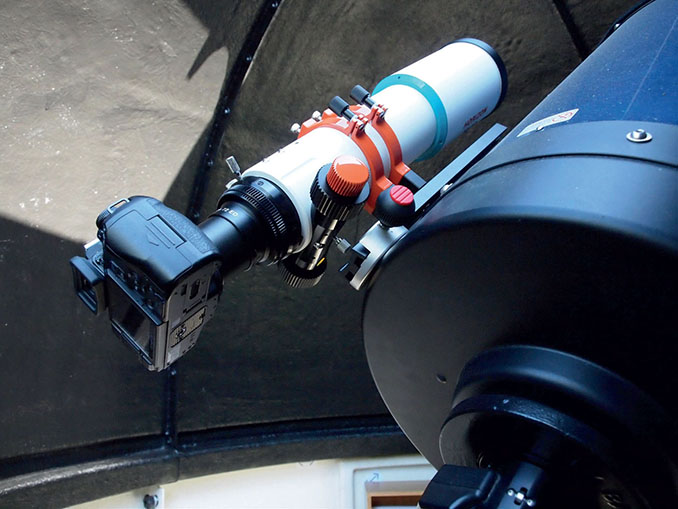
Razor-sharp viewing
My first light with the telescope was not during the night, nor even during twilight. Instead, in April, the gentle lowering of late afternoon sunlight was enough to make visible Venus, which was at the time approaching 50 per cent phase and unmissably bright.
I loaded up a good two-inch diagonal and began with a rather low magnification of 11× provided by a 40mm Plössl. There is always a little extra frisson given to observing planets during the daytime, but the glare-less crisp view of a diminutive Venus promised that this telescope had much more to give.
I steadily worked my way through eyepieces of increasing power. I was expecting, at some point, that I would pass through an optimum magnification. Yet, throughout this exercise, Venus simply grew larger, without any loss of quality.
The telescope happily took Venus to 173× using my Nagler 2.5mm, and was clearly capable of going further. The limb of Venus was razor sharp, while to the telescope’s credit, superb contrast was providing subtle shading at the terminator too. It was an outstanding view of what can be a particularly challenging subject.
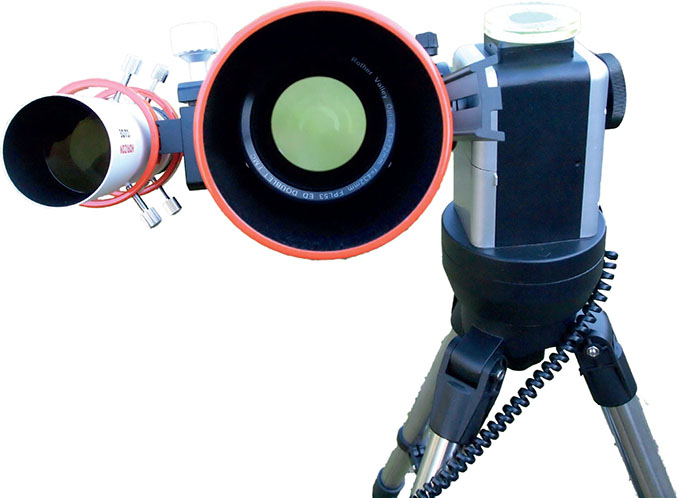
My next task was to put the optics through critical stellar assessment. Choosing a night of steady seeing, I found that, high in the south, Leo offered a range of medium-luminosity stars for the task at hand. I chose third-magnitude epsilon Leonis, since it is bright enough for the job without too much distracting scintillation. Using my 2.5mm Nagler, the defocused star was a textbook series of concentric rings. Very slowly, I moved towards the more critical point of just outside focus where optical deficiencies become more apparent. There were none. The form and concentricity of the defocused star held firm.
I continued fine adjustment until I reached the point of focus, a delicacy aided by the superb 10:1 two-speed focuser. A steady atmosphere helped a lot, but I have rarely seen such a perfect textbook stellar image. A central bright core was surrounded by the faint traces of steadily fading Airy diffraction rings. Achingly beautiful.
This was a fair indication that the telescope could attain its theoretical resolving power – which at 72mm aperture is a double star separation (Rayleigh criterion) of 1.9 arcseconds. Of course, the Universe is not so helpful as to supply exactly matching double stars for every telescope aperture, and certainly none that might be visible at the season and time of night required for a review. (Actually, I did discover there was such a double star available for springtime viewing, but the Universe still outwitted me by planting a tree in the way 30 years earlier.)
Undeterred, I chose instead gamma Virginis (Porrima), which is a tight magnitude +3.5 double in Virgo separated by just 2.5 arcseconds. At 173×, the pair had significant clear water between them, and adding a 2× Barlow made it very obvious indeed. With this evidence I have no doubt that the 72mm ED’s optics are quite capable of distinguishing pairs closer than this.
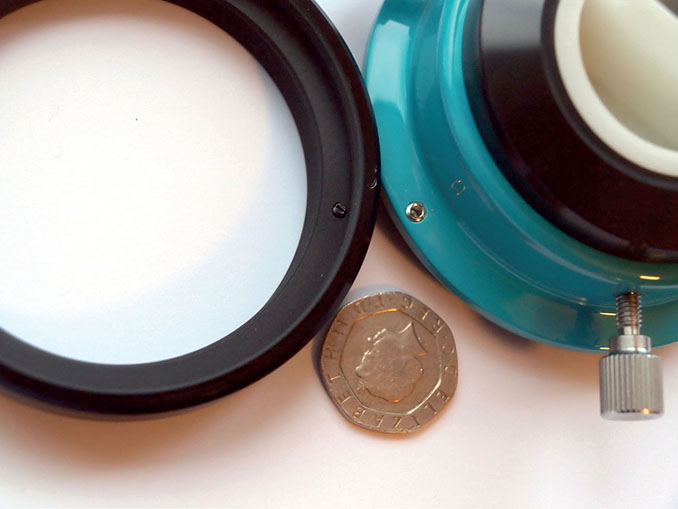
Field edge
As a test of the telescope’s wider-field abilities, I moved back to the 40mm eyepiece to assess the presentation of M44, the Beehive open cluster. This loose spray of stars filled the view and each one appeared perfect, even those at the edge of the field. It was very impressive.
I took the opportunity of moving across the sky to alight on M13, a classic globular cluster in Hercules. As a smaller, tighter object, it warranted a higher magnification, which a 4mm eyepiece delivered (108×). At this aperture, the cluster initially presents as a misty patch with outlying speckles, but as my eyes grew accustomed to the field, there was the flickering of ‘embers’ nearer to the core. Its appearance, which of course I tested by allowing it to drift slowly out of the field, was very nice. It held to the very perimeter. At a higher power of 173× it lost none of its lustre; indeed, it gained from the consequent slight darkening of the backdrop.
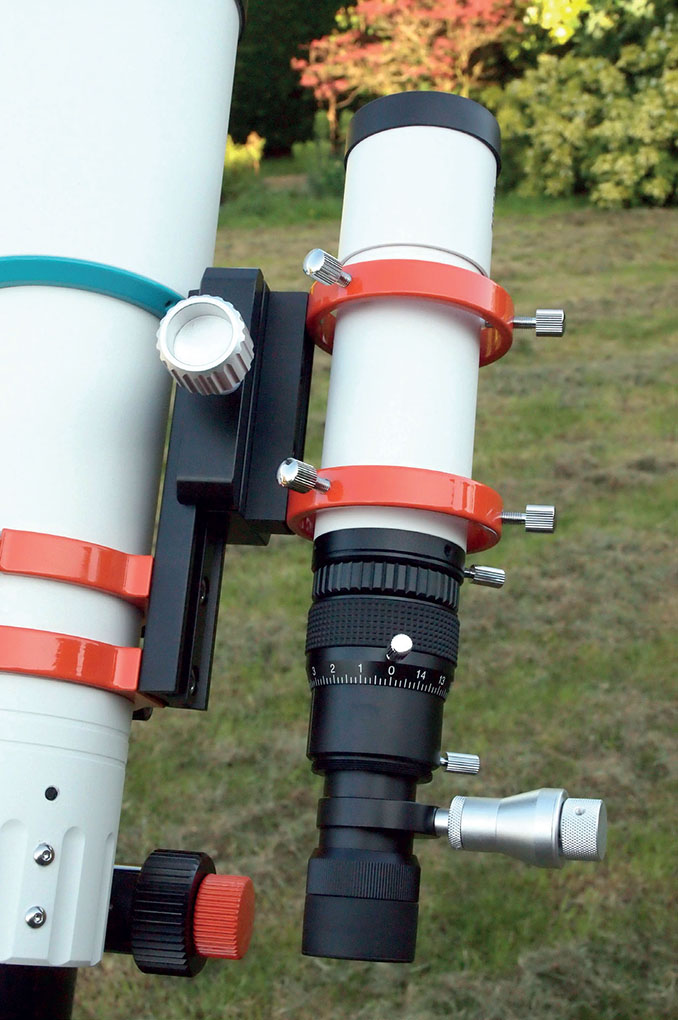
Imaging ability
RVO’s stated aim with this telescope is to provide not only a high-quality instrument for visual use, but also a hassle-free route to imaging. To this end, they supply a matched optional field flattener that gives the required flat plane focus. Additionally, as its name suggests, the RVO 1.0× Horizon field flattener removes field curvature without changing image scale.
Deployment of the field flattener requires it to displace the optical back. This is a fairly straightforward procedure, although it requires use of a watchmaker’s 1.5mm screwdriver and a thin Allen key to slacken off the six miniscule grub screws involved (you’ll probably need a jeweller’s loupe to see them, too!). I see no obvious reason why these screws should be so tiny, other than for their presence to be discrete. It certainly makes this exercise not one I would wish to undertake ‘in the field’, or indeed very often, since in my experience tiny grub screws do not wear well (plus, it seems that the right-sized tools at these dimensions are always the first to go missing). However, I would imagine that as an accessory for a keen imager, the field flattener, once installed, will probably remain in place. The installation is also a very firm one.
This of course leads on to seeing how well the RVO Horizon 1.0× field flattener performs. For a supply of a richly scattered field of stars on which to test this, I returned to M44. With the aid of a T-ring, I attached an Olympus DSLR to the rear of the field flattener.
Satisfyingly, M44 filled the entire sensor. Even more pleasingly, it was immediately evident that the field flattener was doing an exemplary job. Through the viewfinder, and in the subsequent examination of images, the stars were perfect across the entire field. Usefully, the field flattener incorporates a 360-degree slip ring, meaning that I was able to frame the images to my liking.
A few days later, I also imaged the first quarter Moon. This was useful, since it demonstrated that with my 4/3rds sensor, the imaging field on this telescope is in excess of two degrees across.

Unadulterated joy
I finished the review just as the Moon was turning gibbous, two days after first quarter. I decided that I would conclude with a little unadulterated visual joy. The terminator provided rich pickings for high-definition detail. Hanging like a jewel on a chain from the craggy curve of the Apennine mountains, the deep punchbowl of Eratosthenes stood proud, its symmetrical crater wall seeming protective of the thrusting central peak that was almost touched by the shadow of the crater’s eastern wall. On its internal western (Sun-facing) slopes, slumped terracing was clearly visible.
Dominating the southern highlands, the colossal form of the 225-kilometre-diameter crater Clavius dominated the terminator, its western ramparts plunged deep into the unlit hemisphere like a ragged scythe. Not far northwards, Tycho was in full sunlight and already clearly the focus of its emerging ray system. I needed no filter enhancement to reveal the subtle tones of lavas that infused the lunar seas. The contrast was excellent.
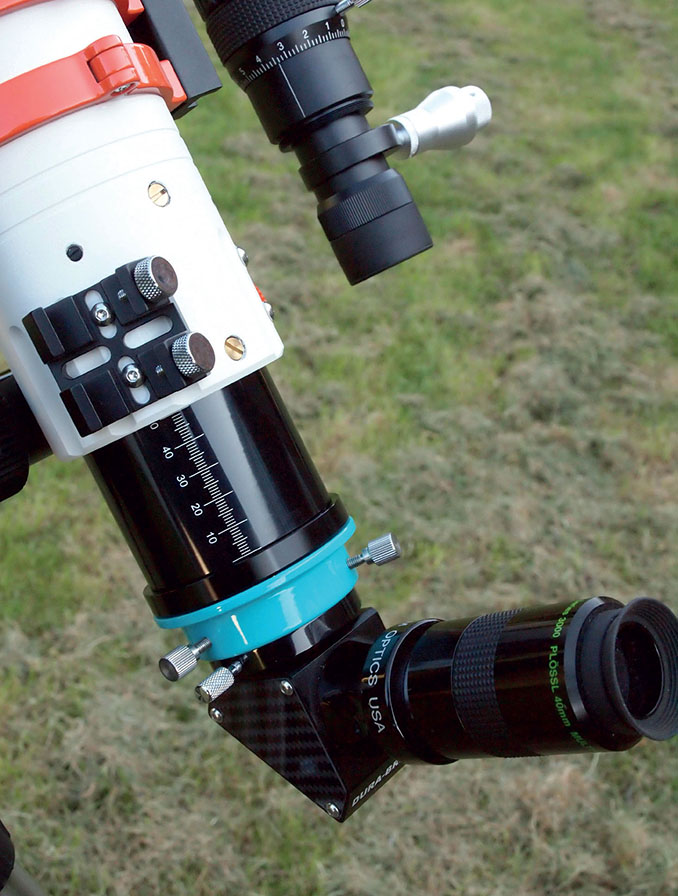
ED optics are, by definition, almost free of false colour. Closely examining the tumbling features in the Moon’s southern highlands, I found none. Between the inky black crater floors and their bleached ramparts, the features simply and starkly passed from dark to light, no messing.
This is clearly a very capable observational and imaging instrument. I thoroughly enjoyed my time testing its mettle and appreciating its merits. Its performance during visual use was excellent, while the access to its imaging potential that is incorporated into its design does indeed make it a great choice for those wanting a sure footing in both disciplines.



